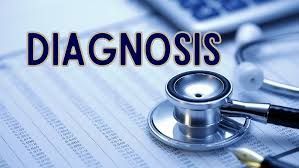di·ag·no·sis -the identification of the nature of an illness or other problem by examination of the symptoms.
Medical Concerns and Initial Consultations
By July, my persistent earache had developed into a consistent throbbing pain, and I became acutely aware that my energy levels were not what they used to be. Concerned, I scheduled an appointment with my family physician, Dr. Croteau.
July 8th – General Practitioner Visit
During my appointment with Dr. Croteau, I mentioned a cold sore that I suspected might be responsible for the swelling in my neck. On examination, my neck and cheek were noticeably swollen. Dr. Croteau initially suspected swollen salivary glands (sialadenitis), but upon inspecting my throat, she raised her eyebrow, suggesting that the issue might be related to my throat as well.
Recognizing the potential seriousness of my symptoms, Dr. Croteau ordered a STAT Ultrasound. The urgency became evident when the nurse scheduled the ultrasound for the same day—a detail that, in hindsight, indicated something significant could be happening. At the time, however, I still assumed it was some sort of unusual infection.
Ultrasound Results and Next Steps
A few days later, the nurse contacted me with the ultrasound results. The report revealed a swollen lymph node. As a result, Dr. Croteau promptly scheduled a head and neck CT scan and arranged a referral to an ENT specialist for further evaluation.
Progression of Symptoms and Diagnostic Testing
July 15th – I continued to have difficulty opening my jaw and noticed a tendency to choose softer foods. A strep test was performed, but the results came back negative, ruling out strep throat.
July 19th – I underwent a Head and Neck CT Scan at Rockview Hospital, marking another step in the investigation of my symptoms.
July 22nd – Early in the morning, Dr. Croteau called to inform me that the CT scan confirmed the presence of a tumor. Although I was shocked, I managed to remain calm and asked several questions. Dr. Croteau patiently explained the next steps and what to anticipate with my upcoming consultation with the ENT specialist.
Later that afternoon, I met with Dr. Compton, the ENT specialist. He performed a thorough examination of my throat using a scope and indicated that he believed it was throat cancer, noting that the tumor appeared rather large. He also mentioned that surgery might not be a viable option. The next step would be to have a biopsy of the tumor to confirm the diagnosis, after which I would be referred to an oncologist at the Arthur Child Cancer Center. Dr. Compton explained that they would test the biopsy to determine whether the cancer was HPV-related.
He also ordered a CT scan of my chest, stressing the importance of checking whether the cancer had spread to my lungs, as this information would be crucial in determining the appropriate treatment plan.
Further Diagnostic Testing and Initial Consultations
Chest CT Scan
July 28th – I completed the Chest CT Scan as ordered by Dr. Compton to determine whether the cancer had spread beyond the initial site.
Biopsy Results
July 29th – Dr. Compton called to confirm the biopsy results: I was diagnosed with Squamous Cell Carcinoma, p16 positive, indicating that the cancer was caused by the HPV virus. Based on information I found online, this type of cancer generally has a better prognosis and outcomes.
Scheduling at Arthur Child Cancer Center
July 31st – The booking clerk from the Arthur Child Cancer Center contacted me to arrange my first appointments. I was scheduled to meet with the dietician on August 6th and to have my initial consultation with an ENT surgeon and a Radiation Oncologist on August 13th.
Meeting with the Dietician
August 6th – I met with Sarah K., my dietician. She provided detailed information about the importance of nutrition throughout treatment, emphasizing the need to maintain weight and adapt to the changes that may occur as a result of the cancer and its therapies. Sarah offered many helpful tips and ideas to support my nutritional needs. The visit to the Arthur Child Comprehensive Cancer Center was overwhelming, but her guidance made a significant difference.
Initial Oncology Consultation and Treatment Planning
August 13th marked my first meeting with Dr. Banerjee the radiation oncologist, alongside Dr. Chandarana the ENT Surgeon. The anticipation leading up to this appointment was a mix of anxiety and hope, and I spent much of the morning meditating and mentally preparing myself. During the physical examination, Dr. Chandarana explained that surgery was not a viable option due to the extent of the tumour in my mouth. Pursuing surgery would have resulted in significant disfigurement, and radiation and chemotherapy would still be necessary. Oddly enough, I felt somewhat relieved by this decision.
Dr. Banerjee then took the time to patiently and kindly walk me through the proposed treatment plan: 33 daily radiation treatments, with chemotherapy administered weekly. He explained that the chemotherapy would enhance the effectiveness of the radiation. His thoroughness and compassion during this explanation were deeply reassuring. When he invited questions, I realized that most of my concerns had already been addressed, except one lingering uncertainty: the stage of my cancer.
When I asked, he told me it was Stage 3. Hearing this felt like a sudden blow—I had hoped it might be Stage 2, even though I knew it was unlikely to be Stage 1. Our minds often search for reassurance. Dr. Banerjee was quick to emphasize, however, that despite the Stage 3 diagnosis—due to tumour size and its presence in both lymph nodes—there was still an 80% chance of cure.
Preparatory Appointments Before Treatment
The following week was filled with a series of preparatory appointments to ensure everything was ready for the start of treatment, which would typically begin two weeks after the radiation mask fitting. My tasks included:
· Completing bloodwork, which would become a weekly routine during treatment
· Having my radiation mask fitted
· Undergoing a dental checkup
· Getting my teeth cleaned—a process that required two visits due to jaw issues
· Having my hearing checked
· Receiving an EKG, which revealed an abnormal sinus rhythm
· Meeting with the chemotherapy team to finalize the treatment plan, which was updated to consist of three high doses of Cisplatin administered in 21-day cycles
Reflections on the Process
Looking back, I feel genuinely grateful for Alberta’s Health Care System. From the moment my family doctor expressed concerns, everything seemed to move swiftly on my behalf—I truly felt fast-tracked. Every health care provider I encountered was not only competent and professional, but also compassionate at every step. I feel incredibly fortunate to live in a province like Alberta, where I have access to such a comprehensive and modern cancer centre.
.

